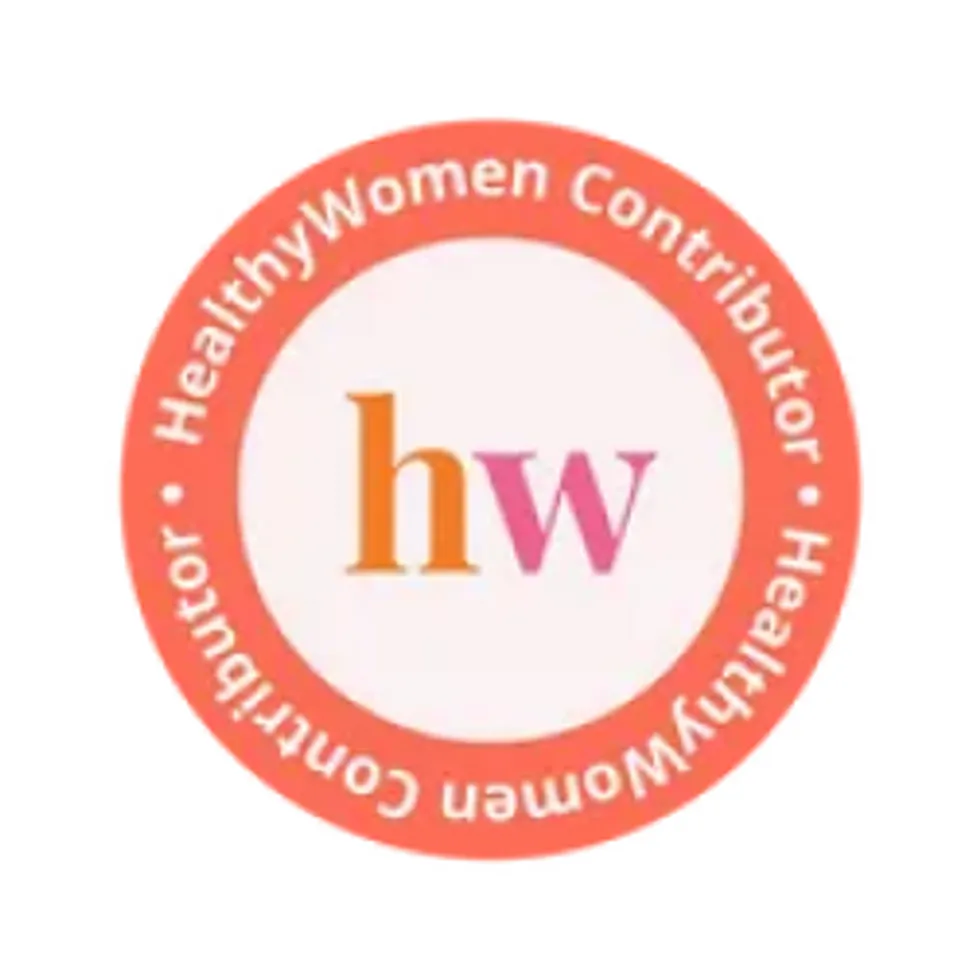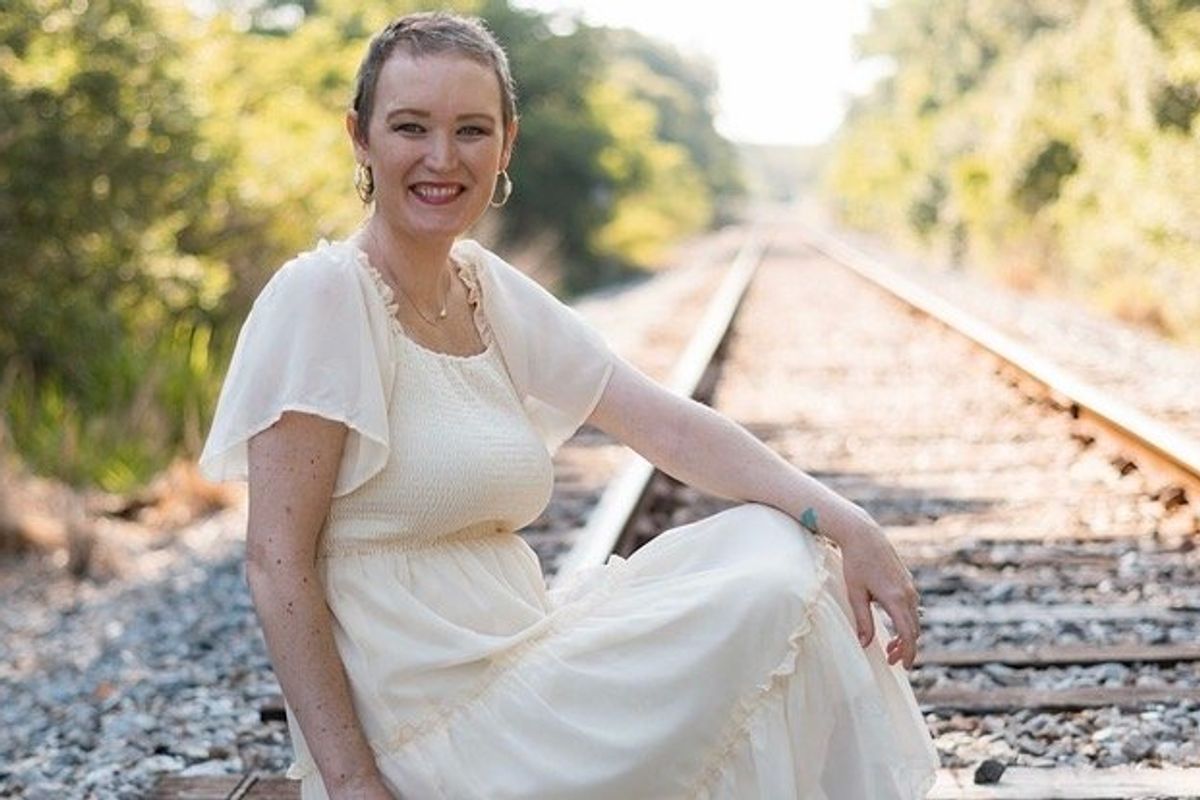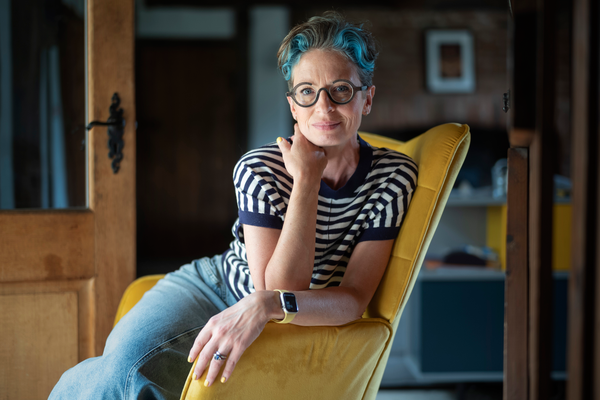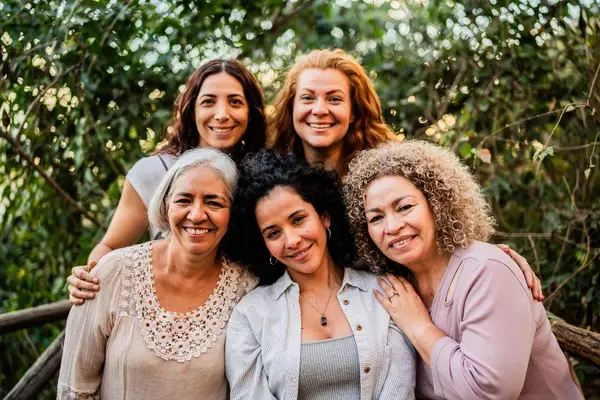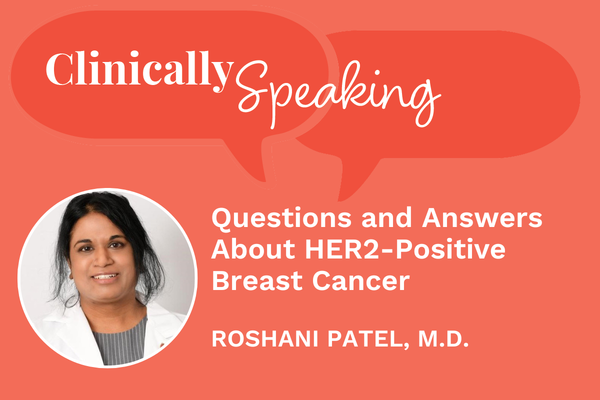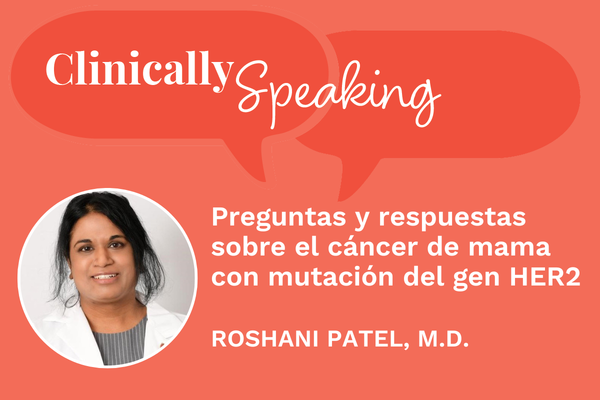As told to Erica Rimlinger
Six months into my first pregnancy, I felt a lump in my breast and brought it up at my doctor’s appointment. “Oh, that’s normal,” my OB-GYN said. “That happens when you’re pregnant.”
Three years later, in 2022, I sat in a hospital gown looking at a PET scan of my body. Each patch of light on the black background showed where cancer had taken residence. The scan was lit up like the Las Vegas strip at night.
That lump was not “normal.” It was HER2-positive breast cancer, and by the time it was discovered three years later, it had spread everywhere.
As shocking as that image was, I’d known something wasn’t right in my body after my daughter was born, and for three years afterward. My hair had turned three shades darker and was falling out and breaking. I slept 12 hours a night and took two-hour naps to get through the day. I saw specialists who diagnosed me with hypothyroidism. In the summer of 2022, I found dimpling in my breast, like I had a broken implant — except I didn’t have implants. Again, a dermatologist told me it was “normal.”
In the fall of 2022, the muscles in my chest felt sore, and when I was showering, I felt a lump. This time, my doctor told me to get a mammogram and ultrasound, which led to a biopsy and diagnosis. I was in my early 30s, mom to a toddler, had always worked out, and had no family history of cancer. How could I have breast cancer? I didn’t fit the criteria.
But the PET scan, glowing brightly, showed breast cancer that had spread to my lymph nodes, thyroid, kidneys, liver, stomach, skeletal system and more.
I immediately started chemotherapy and hormone suppressants. My insurance wouldn’t cover a brain MRI, even though I had cancer everywhere from the neck down and HER2-positive breast cancer commonly heads to the brain when it spreads. My doctor fought for the brain MRI and, in February 2023, it came back clear.
More good news followed: In April 2023, I finished chemotherapy and my tumors had shrunk considerably. My liver enzymes were normal. I stayed on hormone therapy, and my hair grew back. I had regular scans to make sure I was still moving toward my goal of NED, “no evidence of disease.” My doctor sent me for a second brain MRI in August.
I was sitting on the couch with my daughter getting ready to take her to school when I got the call about the brain MRI results.
It was the worst-case scenario: There was cancer in my spinal cord fluid. When cancer metastasizes there, it’s called leptomeningeal disease, and it is incurable. When I rushed in to see my doctor, and three more doctors, that morning, I was told I would live two weeks without treatment and four months with treatment.
I had 10 rounds of radiation on my whole brain and whole spine. I learned there was a medical team in Baltimore using proton radiation. My insurance denied this treatment, but I fought and won.
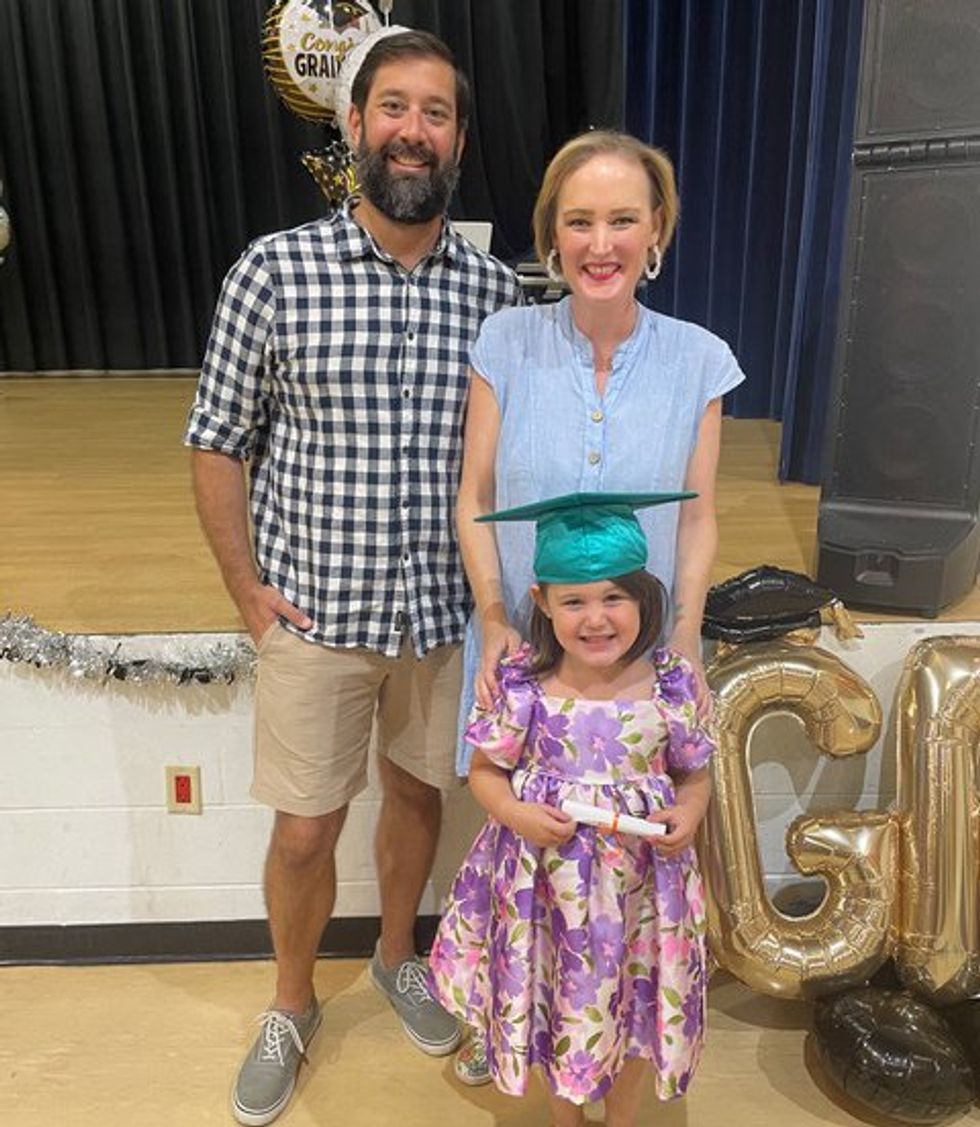
In Baltimore, I stayed at a home for young adults fighting cancer. I missed my daughter and husband back in Tampa, but it was nice to have a car service to the hospital and the companionship of a survivor community with people my age.
The treatment itself, however, wasn’t nice. I vomited all the way home afterward and throughout the whole night, even though I’d been given anti-nausea medication. The second round had me convulsing with nausea from the smell of burning flesh. I was told only some people could smell that during treatment. After the first four days of treatment, I was throwing up every other hour.
After 10 rounds, I’d lost 30 pounds and felt as though my esophagus was burned off. But I made it through. Now, I could return home and have my first-ever surgery: I’d have a port inserted into my brain that could deliver a new vaccine straight into my spinal cord fluid. The vaccine was so new, I’d be the second patient to get it.
For the next 16 Mondays, I’d show up for my six-to-eight-hour appointment. Although the vaccine took just 10 minutes to administer, it could only be mixed after I checked into the hospital, so most of my time was spent waiting. As the vaccine trickled down through the port in my brain into my spinal cord, I could hear it. Then came the pain, which I rated 10 out of 10. It was so severe I couldn’t move for an hour afterward, so severe that when my mom was driving me home and hit a speed bump, I threw up all night from the pain.
In January 2024, I reached my goal of NED from the neck down, but scans showed I’d developed brain tumors. I switched to a breast cancer treatment that crossed the blood-brain barrier. I could take this medication as a pill at home, but it caused me to lose 80% of the vision in my right eye. I started getting injections into the eyeball to prevent it from spreading to the other eye, but it didn’t work.
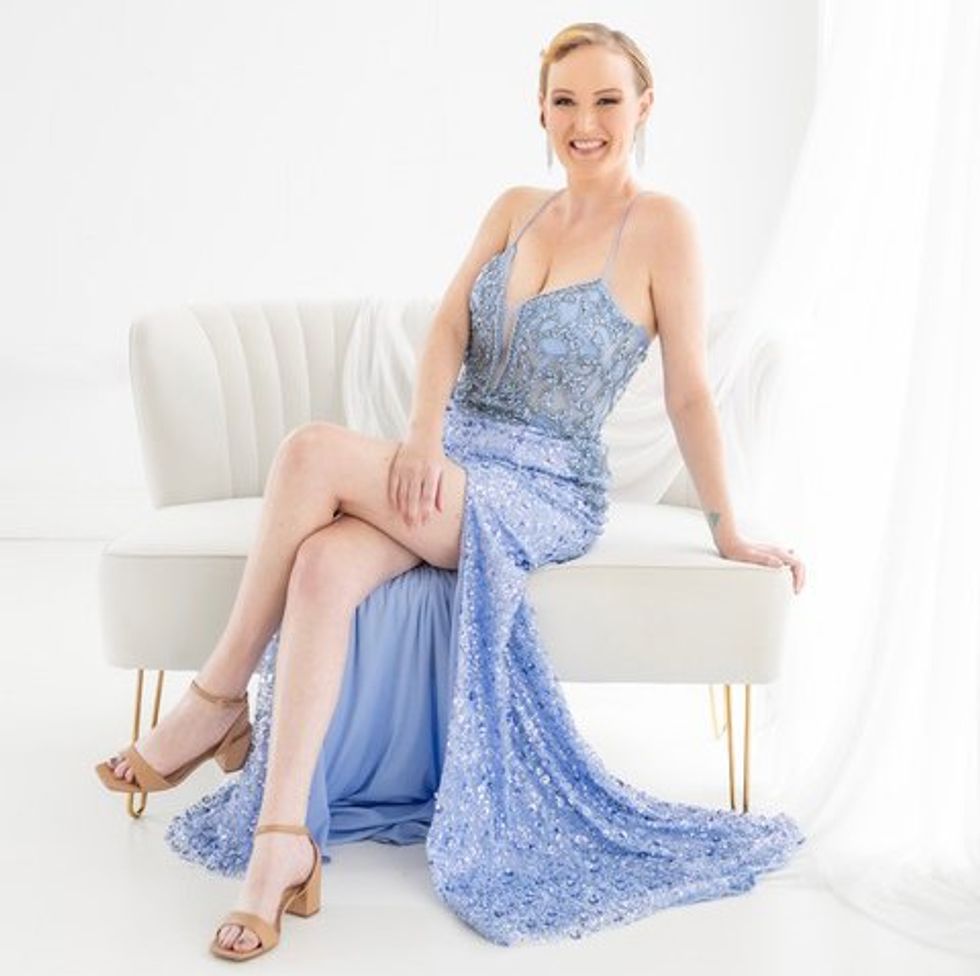
I had to switch to my third line of treatment in two years. I now get this chemotherapy every three weeks. Days three through five are hard, but I get two weeks of feeling well on this medication.
My healthcare providers predicted I’d survive four months, but I’ve now lived for nearly two years with leptomeningeal disease. I’m in uncharted territory. So far, I’m the only person who has been able to finish the vaccine.
I discovered the Leptomeningeal Cancer Foundation, which connects and advocates for people with this disease. I’ve met incredible people through this network, and I’m always willing to share my experience with the vaccine with people who have questions. I encourage people to try it, but I don’t sugarcoat it or make it sound easy.
The people I’ve met through this resource have helped me learn to live with my disease. I advocate for myself. I try every trial, and every new treatment, even if it’s scary. I focus on looking forward. My family has planned a trip to Jackson Hole next March. My daughter, Palmer, has never seen snow. I want to do this first, and all the firsts, with her. She has so many to experience.
I’m a logical person, and I’m not in denial. I only get emotional when I talk about Palmer. She’s the reason I’m fighting. She is light and joy, and she’ll be the reason I know my family will be okay. She will bring everyone through this.
After my diagnosis, I wrote 21 birthday letters for Palmer. I wanted her to read them on her birthdays after I was gone, to ensure she knew her mom’s love remained with her as she grew up. I’ve now lived long enough to throw away the first five letters because I can tell her I love her in person. I’m determined now to throw out the sixth.
This educational resource was created with support from Merck and Daiichi.
Have your own Real Women, Real Stories you want to share? Let us know.
Our Real Women, Real Stories are the authentic experiences of real-life women. The views, opinions and experiences shared in these stories are not endorsed by HealthyWomen and do not necessarily reflect the official policy or position of HealthyWomen.
- After a Breast Cancer Diagnosis, Strap In for a Roller-Coaster Ride of Emotions ›
- Clinically Speaking: Questions and Answers About Metastatic Cancer ›
- Stages of Breast Cancer ›
- Don’t Count Me Out ›
- I Was Searching for a Miracle Cure for My Breast Cancer. I Found Hope Instead. ›
- Caregiving for My Twin Sister with Leptomeningeal Disease - HealthyWomen ›
- Facts about HER2 Positive Breast Cancer - HealthyWomen ›
- Información comprobada sobre el cáncer de mama con mutación del gen HER2 - HealthyWomen ›
- As a Breast Surgeon I was Diagnosed with Breast Cancer - HealthyWomen ›
